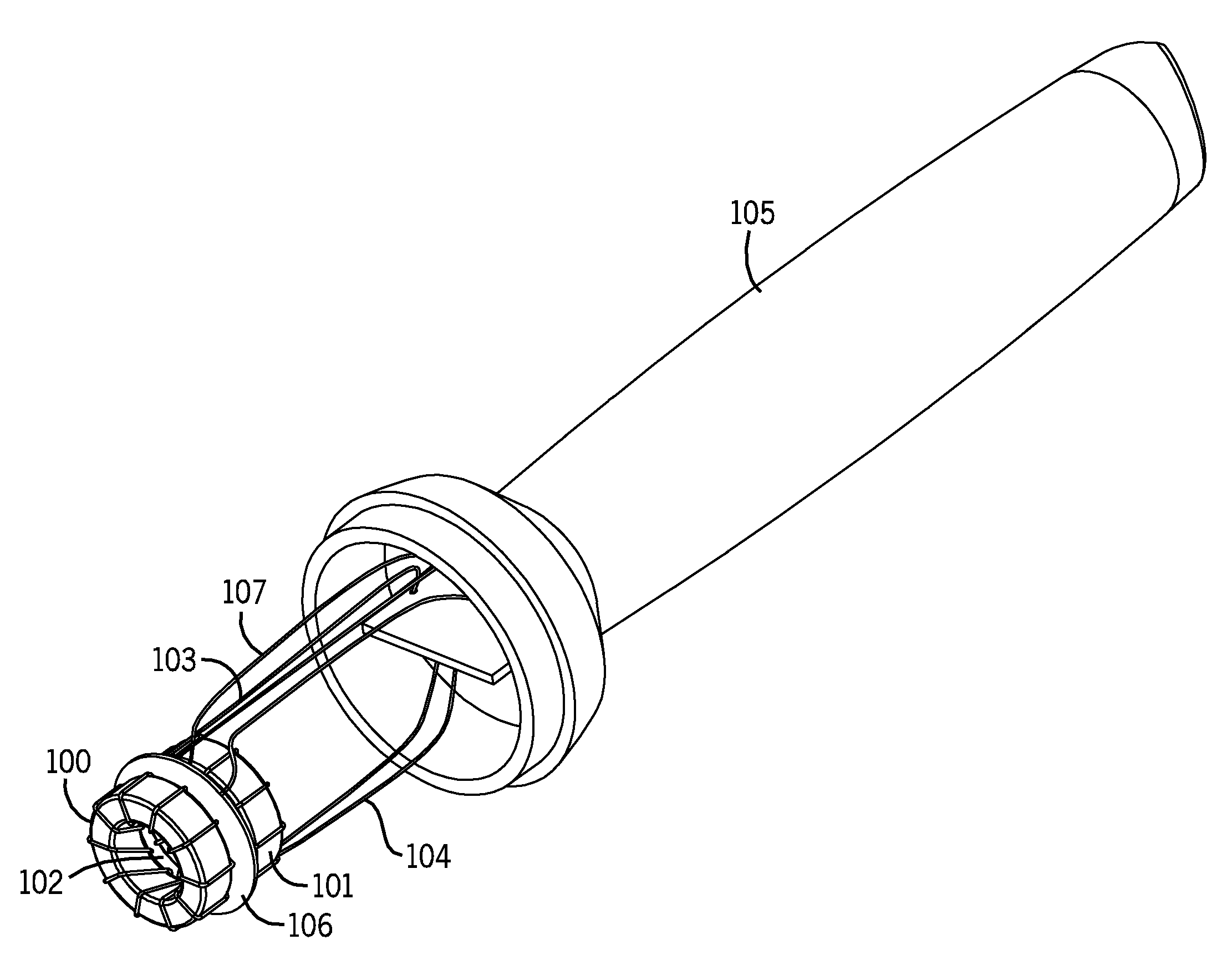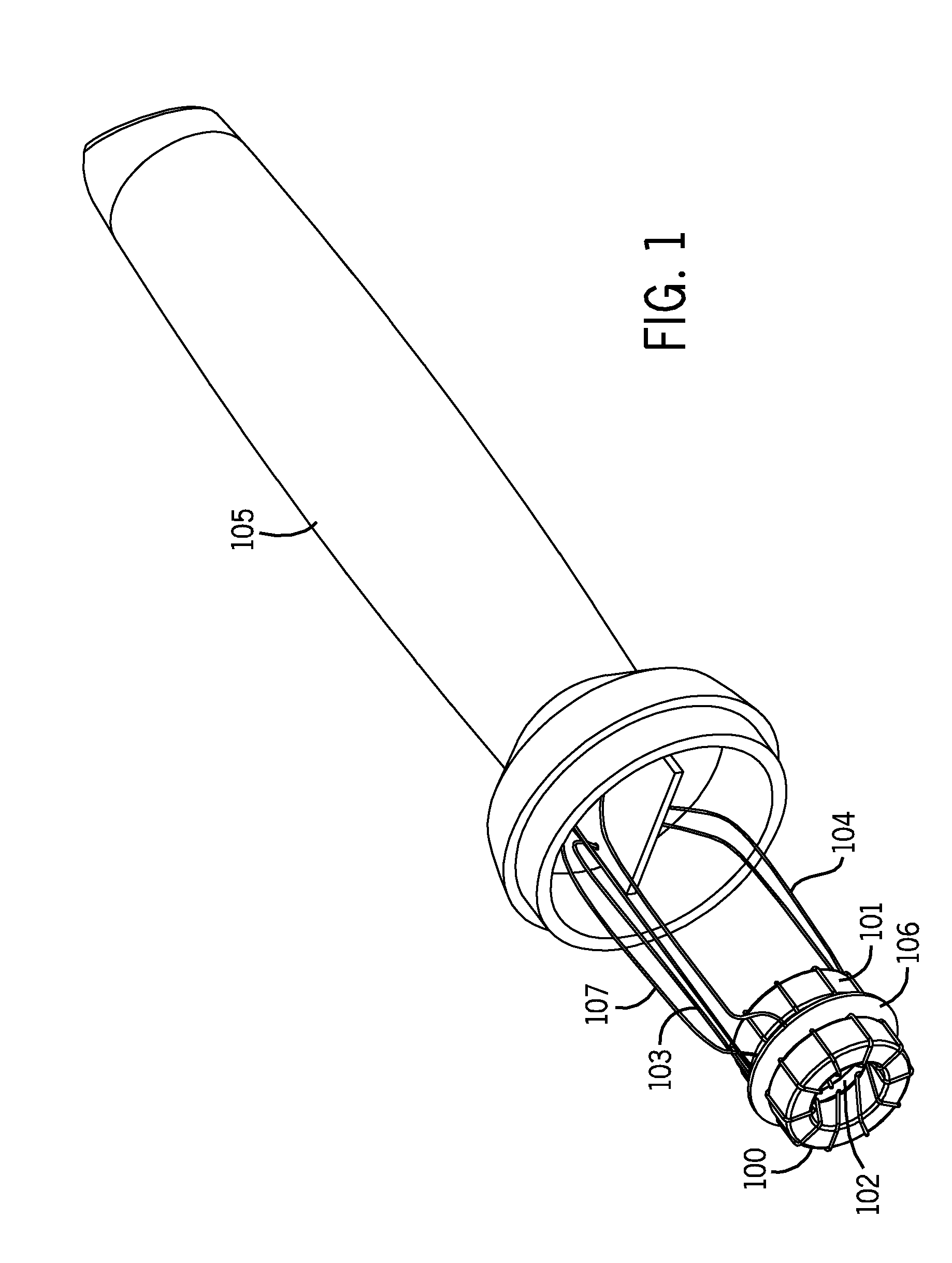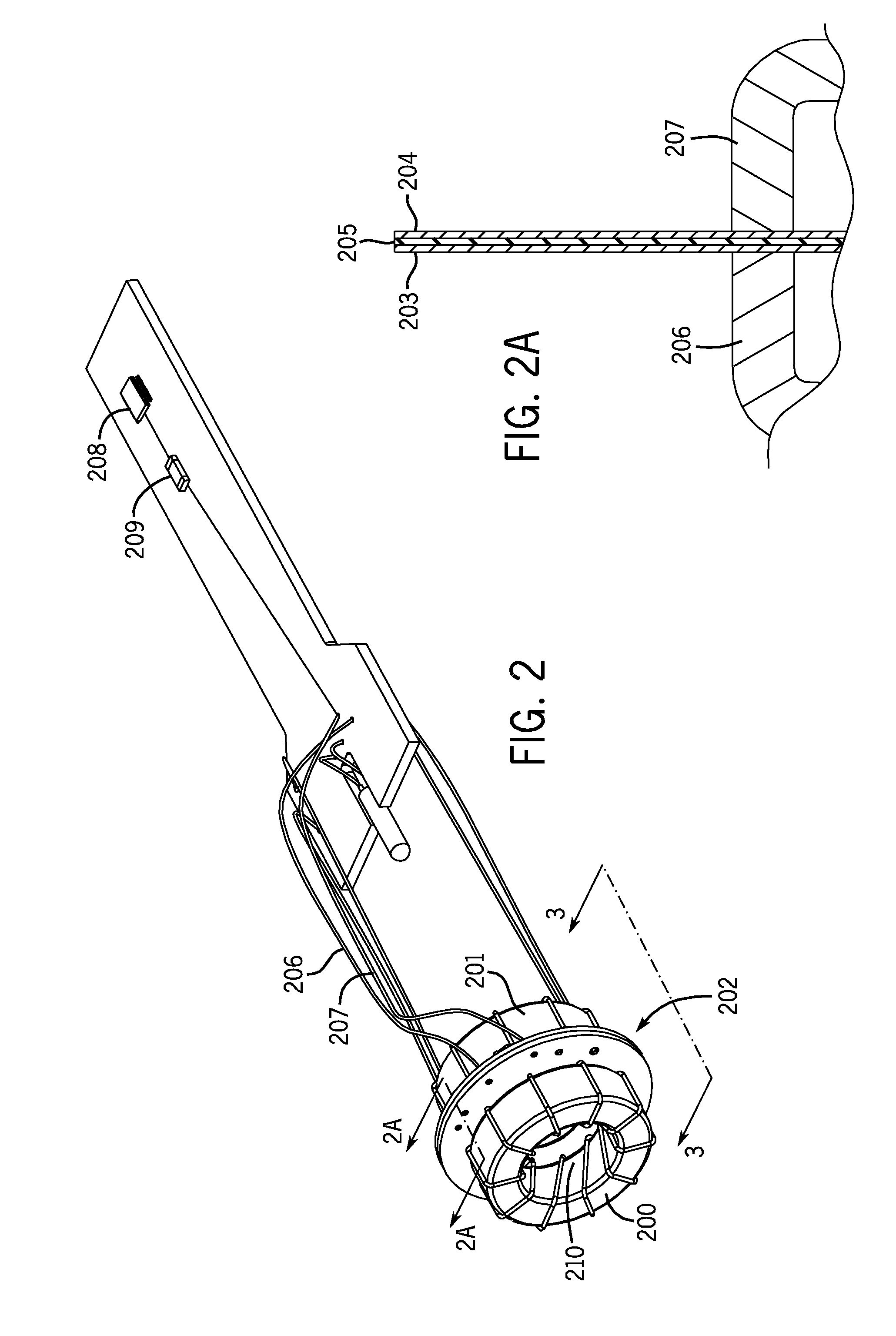Toroidal conductivity probe with integrated circuitry
- Summary
- Abstract
- Description
- Claims
- Application Information
AI Technical Summary
Benefits of technology
Problems solved by technology
Method used
Image
Examples
Embodiment Construction
—DETAILED DESCRIPTION
[0049]The present invention and its various embodiments are described below, with reference to figures as necessary. Reference numbers are used to match particular elements described in the text with those shown in figures.
[0050]Generally speaking, the present invention describes an apparatus and associated methods of construction and operation for carrying out conductivity measurements of a fluid. FIG. 1 illustrates a conventional conductivity probe, as previously constructed. The apparatus includes at least two magnetic inductors 100 and 101, often referred to as toroids in this description though it should be appreciated that they can take other shapes, and associated magnetic circuits. These toroids are coaxially stacked around a central aperture 102 which permits fluid to flow through the aperture. This central aperture is commonly, but not exclusively, circular. AC power is supplied by means of power wires 103 to the drive or primary toroid 100 in order to...
PUM
 Login to View More
Login to View More Abstract
Description
Claims
Application Information
 Login to View More
Login to View More - R&D
- Intellectual Property
- Life Sciences
- Materials
- Tech Scout
- Unparalleled Data Quality
- Higher Quality Content
- 60% Fewer Hallucinations
Browse by: Latest US Patents, China's latest patents, Technical Efficacy Thesaurus, Application Domain, Technology Topic, Popular Technical Reports.
© 2025 PatSnap. All rights reserved.Legal|Privacy policy|Modern Slavery Act Transparency Statement|Sitemap|About US| Contact US: help@patsnap.com



